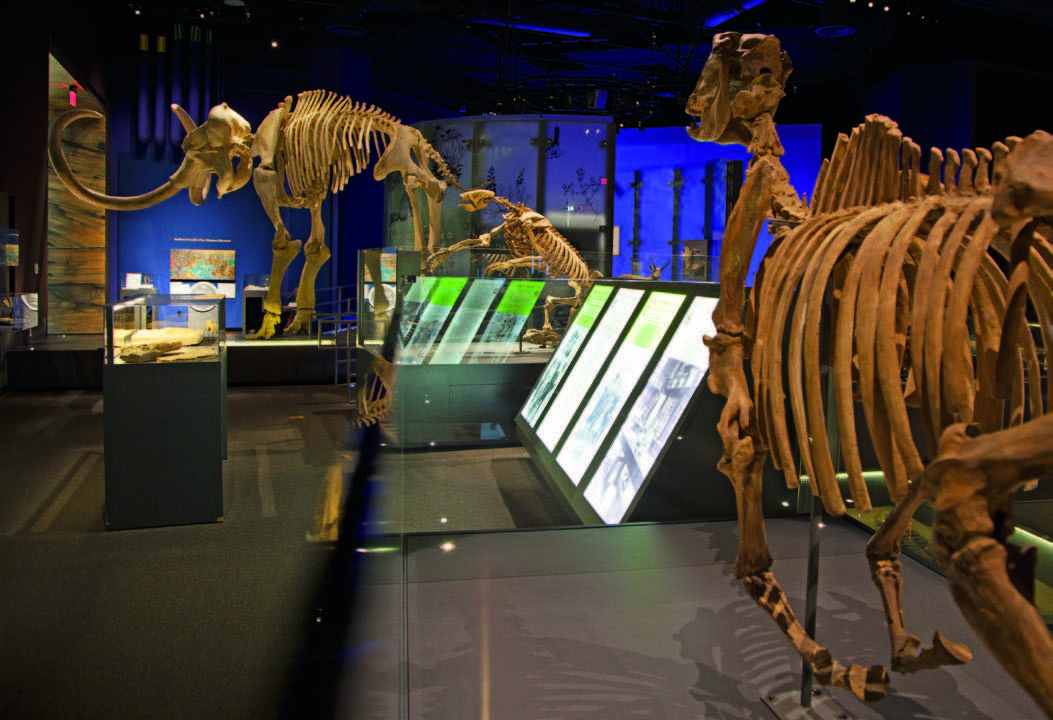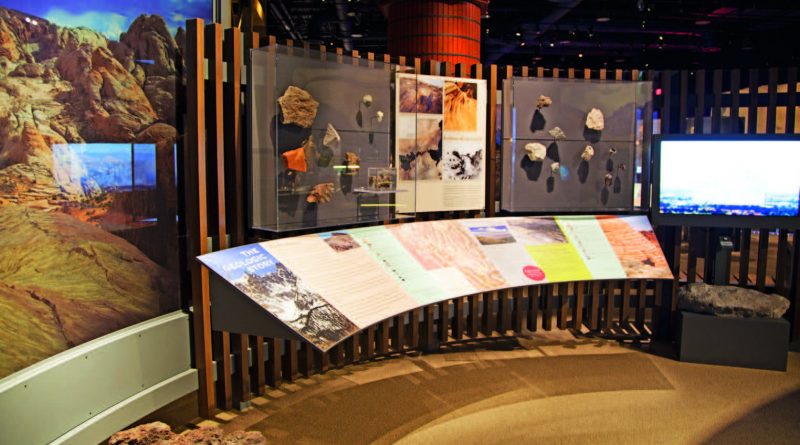A Cultural and Historic Jackpot
May – June 2016
Nevada State Museum, Las Vegas, showcases area’s rich history.
STORY BY ERIC H. MAUPIN
PHOTOS BY SYDNEY MARTINEZ/TRAVELNEVADA
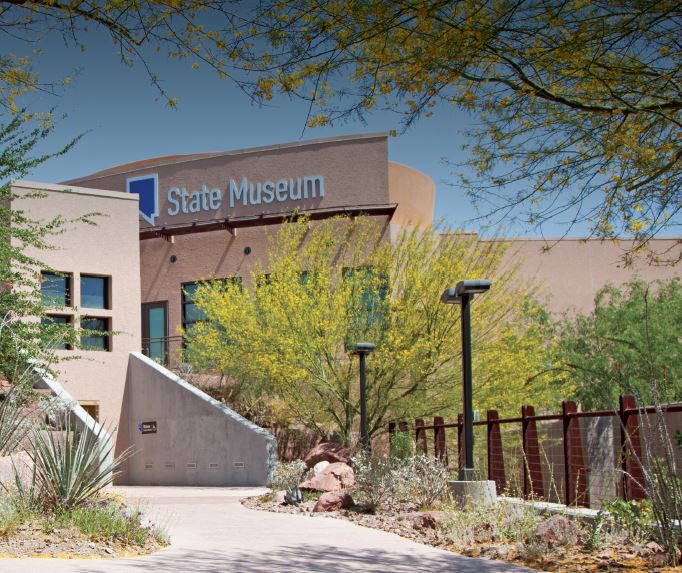 The Nevada State Museum, Las Vegas has been providing tourists and locals with a wide range of historical knowledge about the state of Nevada since 1982. The museum relocated to Springs Preserve in Las Vegas in 2011, and it is a short drive from downtown or The Strip. A joint admission allows access to both the museum and the preserve. This museum covers Nevada’s history as far back as when the state was still under water. See real fossils of the extinct woolly mammoth and a replica of ichthyosaur—a gigantic marine reptile that swam over Nevada 225 million years ago—or learn about how silver and gold mining shaped the land as we know it today.
The Nevada State Museum, Las Vegas has been providing tourists and locals with a wide range of historical knowledge about the state of Nevada since 1982. The museum relocated to Springs Preserve in Las Vegas in 2011, and it is a short drive from downtown or The Strip. A joint admission allows access to both the museum and the preserve. This museum covers Nevada’s history as far back as when the state was still under water. See real fossils of the extinct woolly mammoth and a replica of ichthyosaur—a gigantic marine reptile that swam over Nevada 225 million years ago—or learn about how silver and gold mining shaped the land as we know it today.
WAY, WAY BACK
As you enter the museum, you’ll notice the first section is dedicated to Nevada’s prehistory and environment. Mojave snakes, lynx, coyotes, and others are among those represented, along with the flora and fauna of the area.
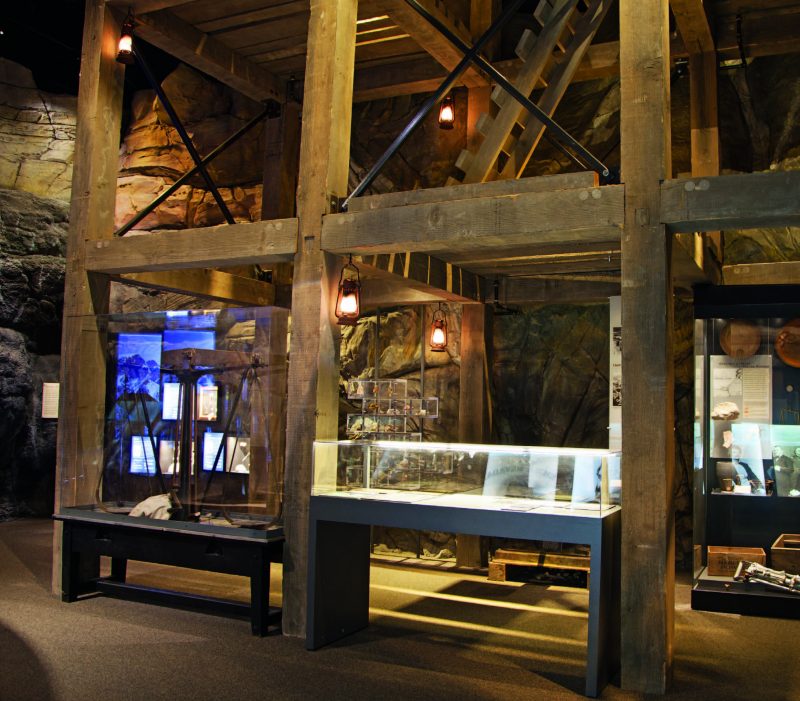 The exhibits are not limited to southern Nevada; the rich mining history of northern Nevada is explained in detail with artifacts from settlers who came to seek the mineral riches of the Wild West. You’ll feel like you’ve gone back in time when you see holograms of miners discussing an average day of work. You can also take a walk in a replica cave that shows various sought-after minerals. Imagine life more than 150 years ago with no Internet or car; how did so many people take the risk of such a long journey across rugged land in hopes of striking it rich? Do you think you have what it takes to be a gold miner in the Old West? Find out by exploring this permanent collection.
The exhibits are not limited to southern Nevada; the rich mining history of northern Nevada is explained in detail with artifacts from settlers who came to seek the mineral riches of the Wild West. You’ll feel like you’ve gone back in time when you see holograms of miners discussing an average day of work. You can also take a walk in a replica cave that shows various sought-after minerals. Imagine life more than 150 years ago with no Internet or car; how did so many people take the risk of such a long journey across rugged land in hopes of striking it rich? Do you think you have what it takes to be a gold miner in the Old West? Find out by exploring this permanent collection.
Venture further inward and you’ll discover the earliest known depiction of the Las Vegas valley-a 19th-century painting of the original Mormon fort. The waters of Las Vegas Springs encouraged settlers, and flourishing ranches and protective military forts began to dot the landscape. It’s amazing to think how the bustling city of Las Vegas started off in such a humble manner, and a visit to the museum will reveal how it became the city it is today.
UNDERSTANDING THE IMPACT OF WAR
“The city continued to grow through the beginning of World War II,” explains Museum Director Dennis McBride. “Without the extensive mining of manganese and the power given by Hoover Dam, building bombs and aircraft would have been much more difficult. This brought many workers to the Las Vegas area.”
Dennis is a living Nevada-history textbook. His passion for his home state, and Nevada’s role in the Second World War, in particular, is evident. The museum gives visual confirmation on how important nearby cities like Henderson and Boulder City were for the eventual victory for the Allies. Nevada’s role in the Cold War is also well illustrated. Visitors can view movies of the nuclear bomb testing at the Nevada Proving Grounds (currently know as the Nevada National Security site), located 65 miles northwest of Las Vegas. This piece of land was repeatedly bombarded with almost 1,000 atomic weapons during nuclear testing from 1951 to 1992.
A GAMIMG MECCA IS BORN
Myriad maps display how Las Vegas developed into the large metropolitan city it is today, and show just how rapidly the Las Vegas Valley has grown in the last 50 years. People flooded the valley after World War II to find work in the casinos and build their new suburban dream home. You can also learn about Howard Hughes’ incredible influence on modern Las Vegas.
No exploration of Las Vegas history is complete without the impact of gaming and show business in Clark County. The museum’s Viva Las Vegas permanent exhibit hosts a vast quantity of vintage one-armed bandits, photos, poker chips from the 1960s, and other ephemera.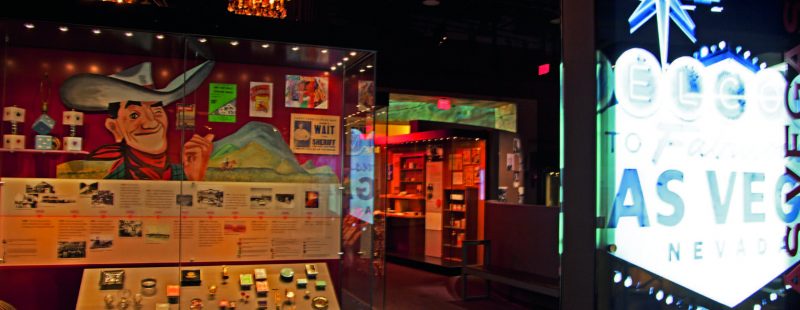
GIRLS, GIRLS, GIRLS
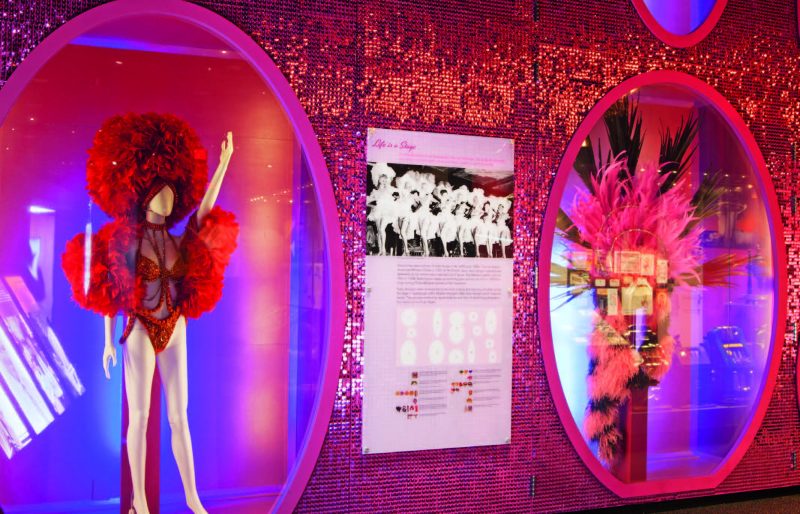
Seductive showgirls—an intrinsic part of Las Vegas lore—helped increase casino revenues, so no expense was spared to make their costumes as sultry as possible. Some 9,000 costume pieces used in the “Les Folies Bergere” stage show at the Tropicana were recently donated to the museum in order to preserve the history from this provocative spectacle. This show originally began in France but made its way to Las Vegas in 1959, lasting almost 50 years.
The museum is working on an exhibit that showcases more than 50 outfits, complete with flamboyant Marie Antoinette-style headdresses, shoes, G-strings, sparkling tops, and Can-Can dresses that were used in the show. Karan Feder—a guest curator—has been dedicating a large amount of her time to organizing and restoring these historical ensembles.
“I love the research aspect to this job,” Karan says. “I’ve been working on this project since 2013 and my favorite part about it is being able to put a face and a name to each individual piece.”
Each of these items was created to fit the individual performer and many dancers have confirmed that they wore specific items, which were then labeled with a name, giving a unique story to each piece. In May, some of these outfits are on display at the Las Vegas Convention Center. At the same time, the museum will host an exhibit of Las Vegas memorabilia which will showcase collectibles and tourists trinkets dating back to the 1950s.
